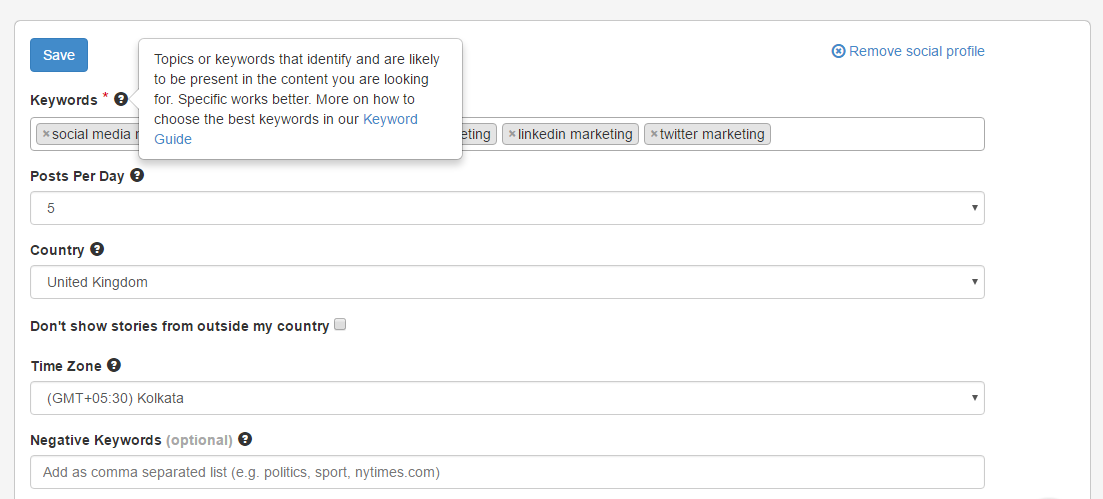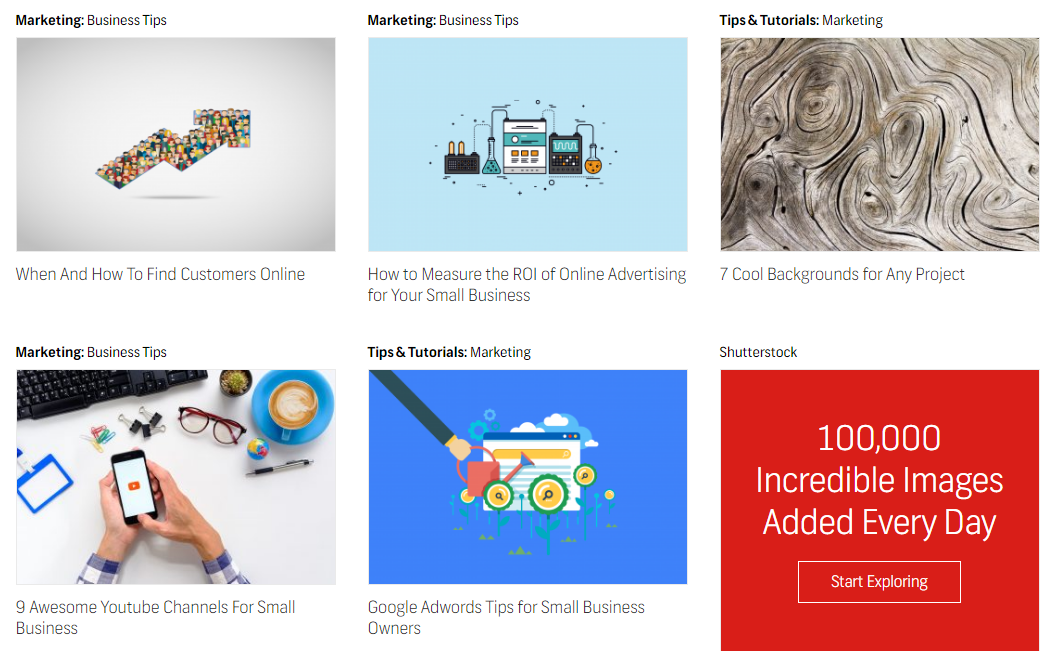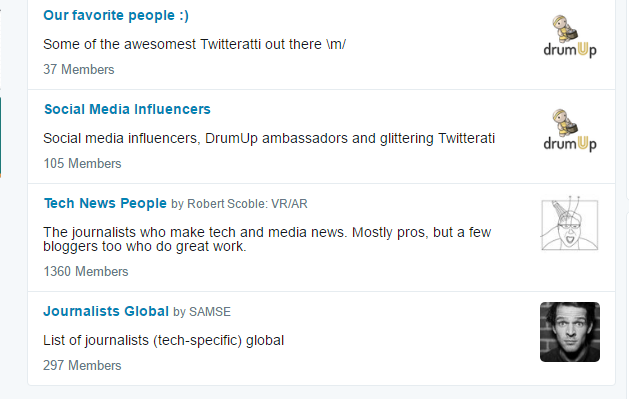How to Build Inexhaustible Resources to Inspire Your Content Marketing Ideas
We know social media impacts business, and that social media marketing has incredible benefits.
- 1/3rd of the world’s population actively uses and can be reached through social platforms
- People are increasingly turning to social networks for information and decision-making
Recommended reading: 20 Top Social Media Marketing Trends for 2017
Social is a proven asset in engaging existing customers and acquiring new business, but has it benefited yours?
It’s now common knowledge that content plays a critical role in enabling social media marketing. What you say matters, as does how you say it, but how do you get it right every time (or at least most of the time)?
Most brands that have a powerful social media presence are either the big guys, or really great at consistently producing exceptional content.
How do you create a content marketing strategy that delivers serial hits?
If you are an in-house content specialist, you’re probably exhausted from pulling ideas out of the same hat.
If you’re part of a digital or social media agency, you may run into the occasional block, incapable of sparking fresh ideas for every single project.
Here’s a five step fix. A solution that will never leave you staring blankly at walls, pulling out your hair or driving your deskmate insane.
1. Familiarize yourself with existing content marketing patterns that competitors and experts use
When you’re just getting started, or have exhausted all your ideas, a good way to replenish them is by looking at what’s working for others. I like to think of it as cheap market research.
Except, you shouldn’t only look at competition, but also publications, non-competing companies and experts in your industry.
If you know a company is successful, you can probably figure out their strategy and use it to grow your business.
How to do it:
1) Identify the businesses/online entities you want to use for research by
- Checking Alexa, Domain Authority and Page Authority of their websites
SEO Review Tools has a DA and PA checker that accepts links in bulk. You can assess multiple websites at once with the tool.
- Looking at the engagement, audience sentiment and response rates on their social media pages
2) Figure out what their content marketing strategy is by
- Finding the keywords they rank for that are driving them traffic
- Checking the backlinks to their content assets (blog, videos and other resources) to understand which domains typically link to what content
- Looking at their blog and social media content, graphics, tone of voice and concepts they discuss
- Frequency of posting, what content themes they focus on each month, where they sell their products
- Which social platforms they’re most active on and which ones they receive most engagement on
Ahrefs can help you with keyword research, BuiltWith will tell you what technologies your competition uses and WhatRunsWhere will display their graphics for you.
Mark Schaefer has spoken about content patterns before, and how publishing a cycle of hygiene (SEO focused), hub (evergreen guides) and hero content (viral material) can help build a powerful brand.
Observe how the sites you have chosen apply patterns like these to increase brand exposure and generate business.
Let’s identify the social media content strategy of a popular brand. StarBucks uses mouth-watering descriptions of their recipes, paired with bright but pleasing visuals and smart, unique hashtags. They also share cause-based initiatives, the occasional GIF and retweet fans expressing their love for StarBucks items.
What I find most interesting, are the questions that they ask fans to get them to engage.
Not sure which roast you ❤️ the most? We're here all day to answer your coffee questions and help you find your perfect cup. #AtHomeCoffee pic.twitter.com/83tWpN5cFn
— Starbucks Coffee (@Starbucks) March 23, 2017
2. Segment your industry into well-defined areas to watch for developments
Most successful business and blogs have certain well-defined areas that they cover. Defining those areas and documenting it will help you create a laser focused content marketing strategy.
Most blogs’ guest posting guidelines define their content strategies. They’ll tell you exactly what they want to talk about. Some blogs even announce their content calendars at the beginning of each year, to ensure that contributors support their content and SEO efforts.
What areas should you cover?
While the intention is to take inspiration from successful blogs, you should probably only use their strategies & patterns, and apply them to your content and themes.
The areas should ideally be closely related to your business and the products and services you offer.
For instance, Expedia, the travel agency, creates listicles covering top destinations, top things to do, top festivals, time-saving tips and the lot.
You don’t want to directly compete with them in that content space, because it might prove too challenging. Instead, create your own listicles, on areas that haven’t been covered or has a keyword within easy reach.
Ahrefs will tell you how tough it is to rank for any keyword.
Once you have your areas, or keywords to watch, it’s time to find sources to stay updated on the latest involving them.
Our content curation app has keyword groups or preset areas that you can use to monitor developments.
You could also try Brian Dean’s Skyscraper technique, which is essentially outdoing the most popular post for a keyword and grabbing its traffic.
3. Create a laundry list of websites, publications, newsletters and social media pages to follow for inspiration
Neetzan Zimmerman is a content genius of sorts, and is considered responsible for creating viral content multiple times.
He attributes some of his success to the 1000 odd websites that he scans for content inspiration, and they aren’t the popular ones. They’re the rare, unheard of and unexposed places on the internet like 22 words or Tastefullyoffensive.
You need to dig deep to find insights and ideas that are current and new.
Some of the best blogs in marketing are usually the first to popularize a new and revolutionary study, or a trend before it picks up.
Incidentally, DrumUp is designed to curate fresh and new content, inspired by that very principle. Content is more valuable when it hasn’t reached many people yet.
When creating your list of websites, publications, newsletters and social media pages, include both the people you want to watch to benchmark your progress, and the rare places that will give you fresh ideas.
List websites to watch different elements in content:
- Titles
- Graphic design
- Concepts
- Case-studies
- Strategy
4. Setup automated systems to curate content for your reference
Once you have your list, it’s only a matter of curating that content. You could automate the curation process for your convenience.
There are at least 5 ways you can do this:
1) DrumUp’s content library
Once you have set up keyword based content streams on DrumUp, you can start building your content library.
Create categories in your library before you begin. These could reflect content belonging to the different areas you’re focusing on, different target groups or different stages of a conversion funnel, even. You decide how best to categorize your content.
Once you have, you can click on the star symbol anywhere on your dashboard to add articles to your content library.
Save time managing your social media accounts
Are you still managing your social media accounts directly from Facebook/Twitter/LinkedIn? Make your life easier by managing all your social media in one place, schedule posts, repeat posts, curate content and more. Try DrumUp now, it's free, forever.
If you spend a few minutes on this exercise each day, you will have a huge reserve of content waiting for you when you need it.
2) IFTTT’s hashtag recipe
IFTTT has one recipe that integrates with Twitter’s advanced search. You can get the tool to collect tweets mentioning a certain hashtag and email it to you.
That way, you can keep track of the conversation around certain hashtags on Twitter and identify growing trends.
3) Newsletter subscription
You could collect the best content of some websites by subscribing to their newsletters. If you don’t want to clutter your inbox, you could have a dedicated email address for content curation.
4) Feedly, Flipboard and other such RSS aggregators
You can also attach the RSS feeds of the websites you want to monitor to an RSS aggregator like Feedly, Flipboard or DrumUp.
5) Create Twitter lists
You can create private Twitter lists to follow influencers, expert bloggers and competitors. Twitter lists also double up as a great way to maintain relationships on Twitter.
5. Commit to a regular schedule to view and update your list
After setting up automated content curators, most of your work is done. Your resources are ready for review when needed, but it’s important that you commit to a regular schedule to make the most of them.
Once a week? Once a month? Once a quarter?
If your industry moves quickly – like the tech and electronics industry – it’s best to check in once a week at least, so you never miss an important development.
You could set up a recurring reminder on a calendar on Google or your phone, so you stay consistent.
Warren Buffett, Elon Musk and Bill Gates were avid readers. Buffett takes it to the extreme by reading for over 3 hours each day! You don’t have to compete, but having resources at the ready gives you the opportunity to read when you can and need to, before planning a post or creating your email newsletter.
Image credits:
Feature image via Freepik.com
Inline image via Freepik.com






